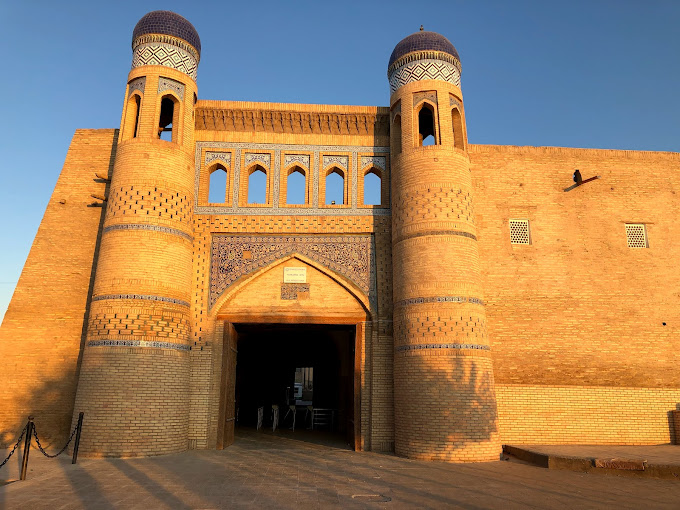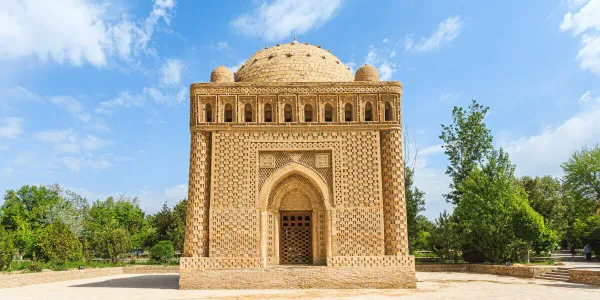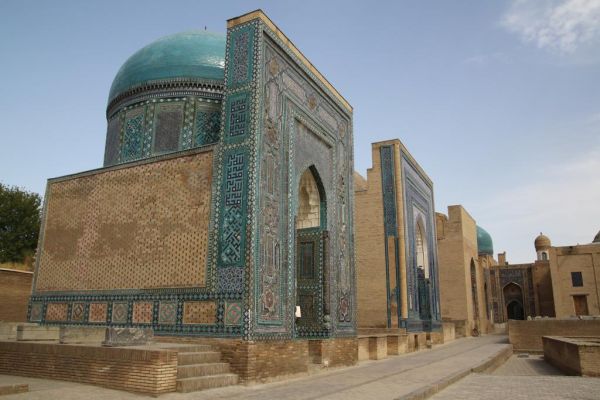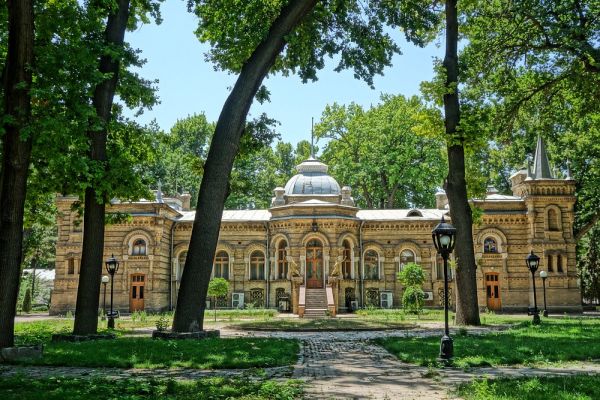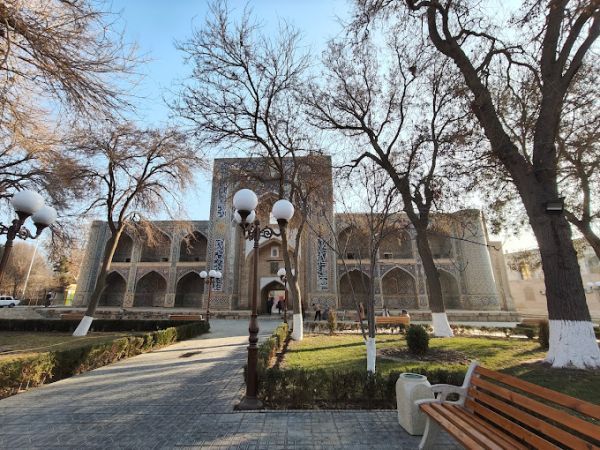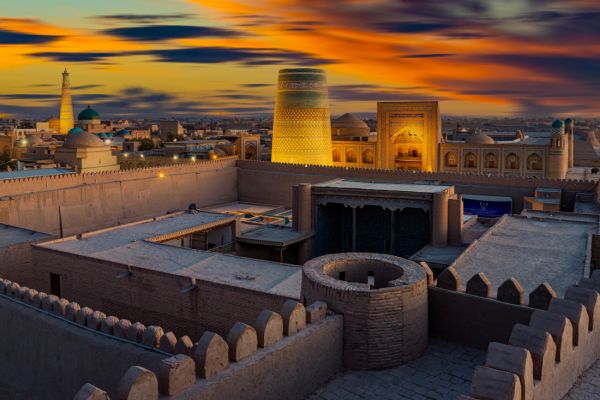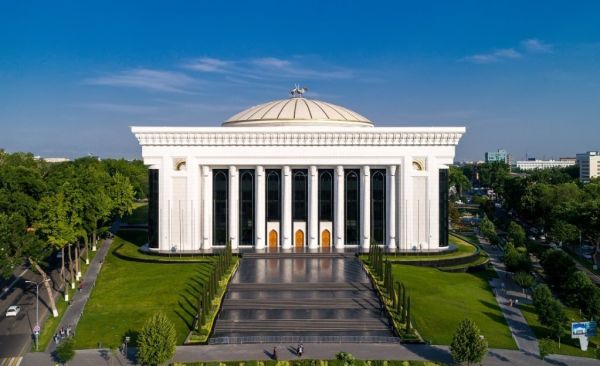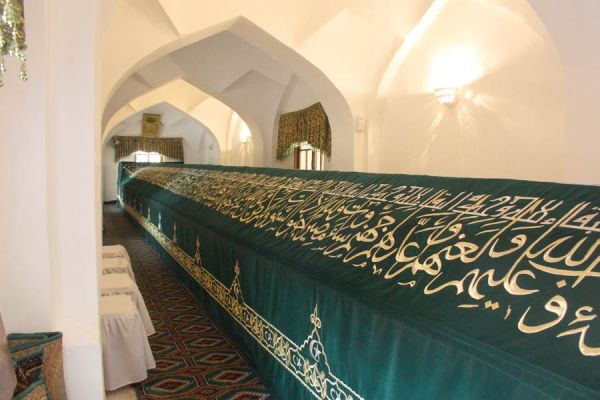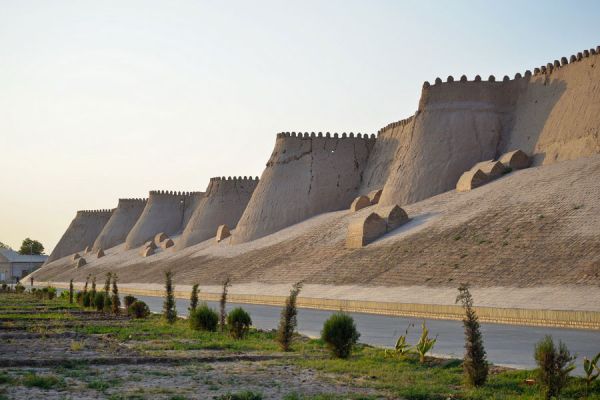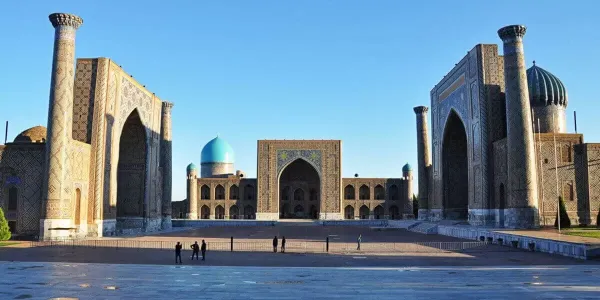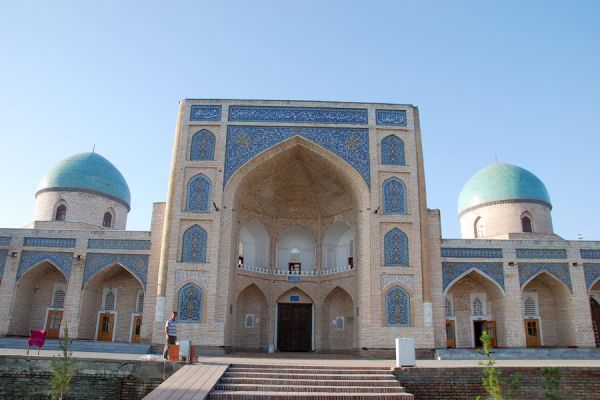Palvan-Darvaza Architectural ensemble in Khiva
The Palvan-Darvaza architectural ensemble is the most important historical site of the ancient city of Khiva, which is part of the Ichan-Kala complex of attractions. The Palvan Darvaza building is not only the main eastern gate of the Khiva citadel, but also the central trading place of the city, the ensemble also includes a square with a bazaar and baths.
History
The area adjacent to the eastern entrance to the Ichan—Kala Citadel is the most bustling daily living space within ancient Khiva. The gate itself was named Palvan-Darvoz, which means "heroic gates". The arched gate with a massive portal was built in the middle of the first decade of the 19th century. Above them is the calligraphic inscription "Shakhri Khiva" (meaning "city of Khiva"), and the completion date of the structure is 1806. However, the final form of the building was acquired when Allakuli Khan was the ruler of Khiva, no earlier than the 35th year of the 19th century.
Adjacent to the arch leading into the interior is a merchant's gallery, topped with a row of domes. On the outside to the right of the entrance, until 1873, the crafts of those who were engaged in the slave trade were arranged, this place was intended for public executions and for the announcement of khan's decrees to the people. Other names of the "heroic gates" associated with this dark page of history are "slave gates" ("Kul darvaza") or "Pashshab darvaza" ("Gates of Execution"). According to historians, it is believed that human trafficking has always flourished in this region, which was abducted by Turkmen tribes with the help of their world-famous unsurpassed horses. In the 17th and 18th centuries, a prison was located on the site of the modern gate.
Architecture
All the buildings located here had a certain functional orientation and were built in an ensemble of a square and gates as needed. Due to the cramped construction, some buildings began to be moved outside the walls of Ichan-Kala. The entire architectural complex of Palvan Darvoz is marked by extremely exquisite decor and filigree precision of proportions.
Just behind the entrance arch of the Palwan Darwaza gate is a shopping dome with many shops and small traditional baths on the sides. Travelers and merchants of various goods who came to Khiva always entered the city through the Palvan Darvaza gate. Everyone entering first visited the baths, each of which could accommodate up to 50 people at a time, where the traveler thoroughly washed and washed his clothes, and only then could go further — home or to accommodation in a Caravanserai. This is both a Muslim tradition, and at one time served a sanitary and quarantine role for the city. In addition, Palvan Darvaza is located so that it is the lowest point of the Ichan-Kala complex. That is why all the sewage from the baths flowed out and did not enter the city.
The baths themselves are located underground, which contributes to the excellent preservation of heat inside them. In order to get to the baths, you need to go down the steps made of burnt bricks. The first room a traveler entered was a locker room or a resting place. Then, having completely removed all his clothes, the visitor passed through several rooms — one after the other — in each of which the air temperature was getting higher and higher. Bathing and ablution took place in the very last main room.
